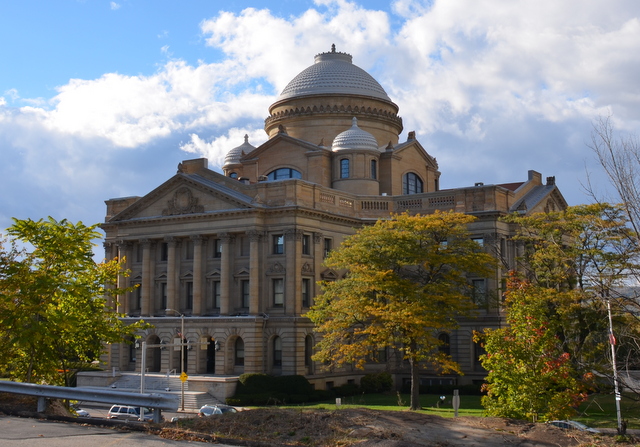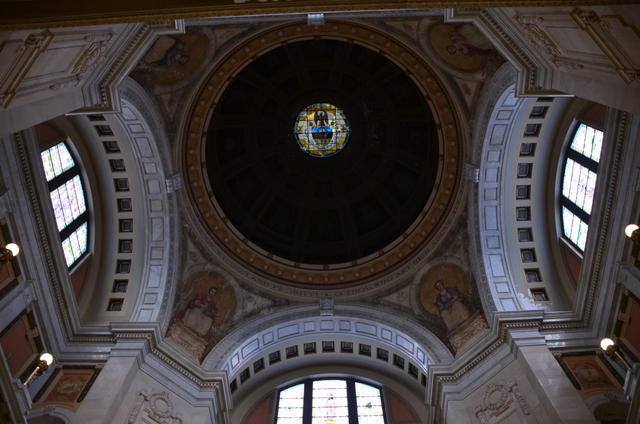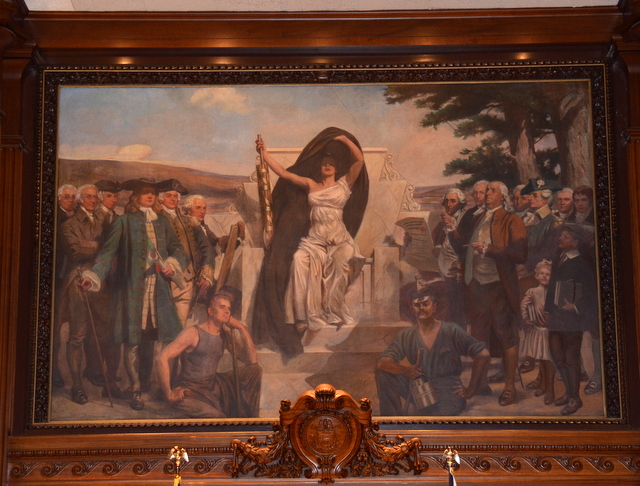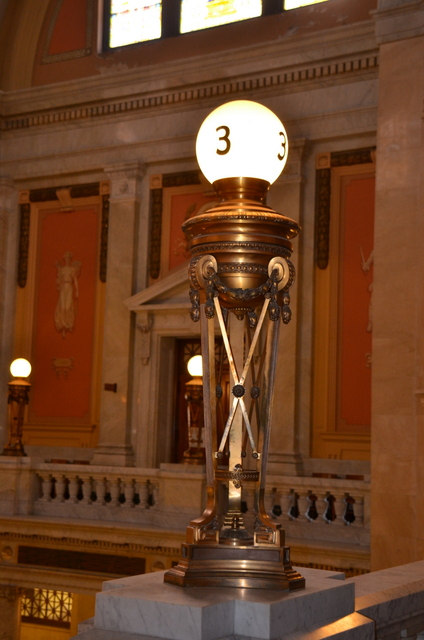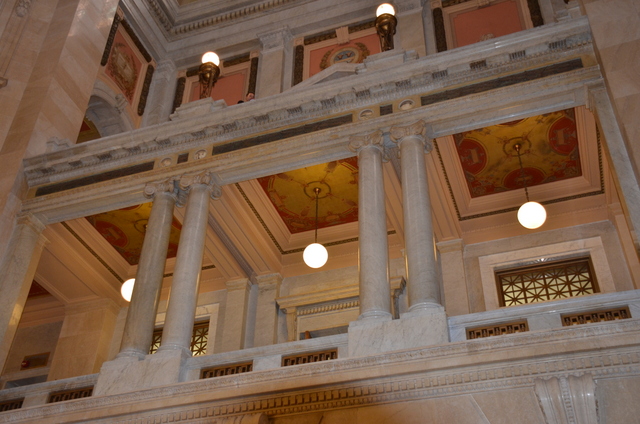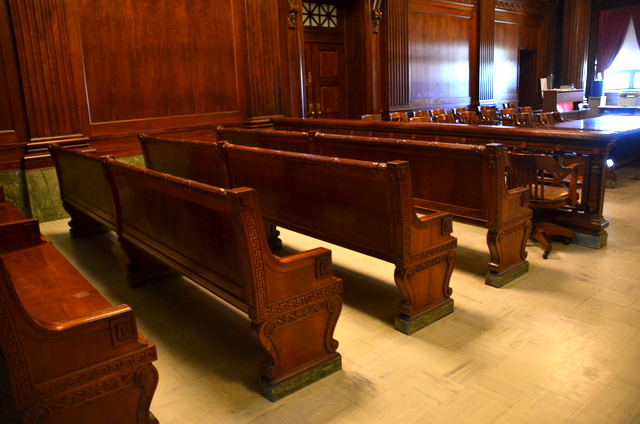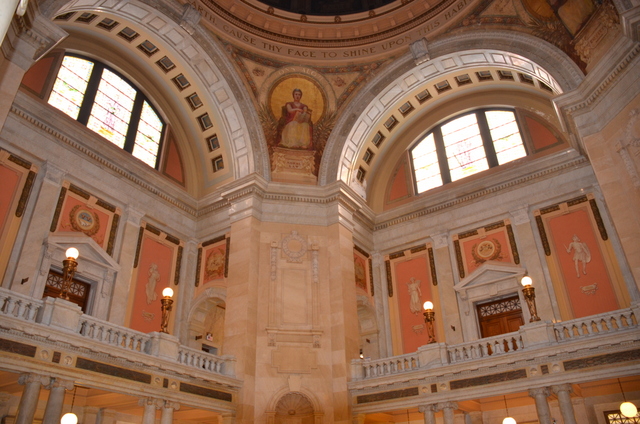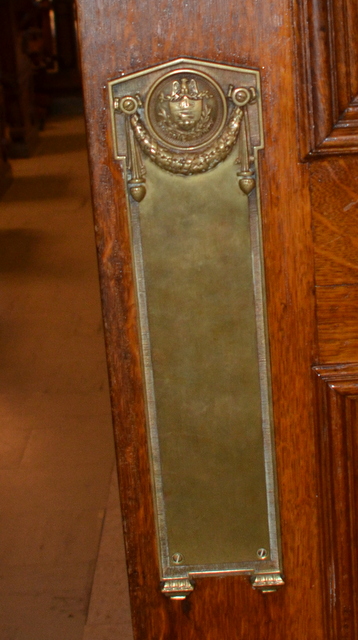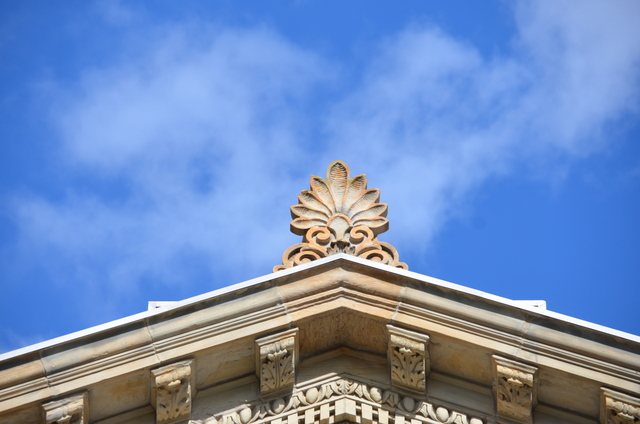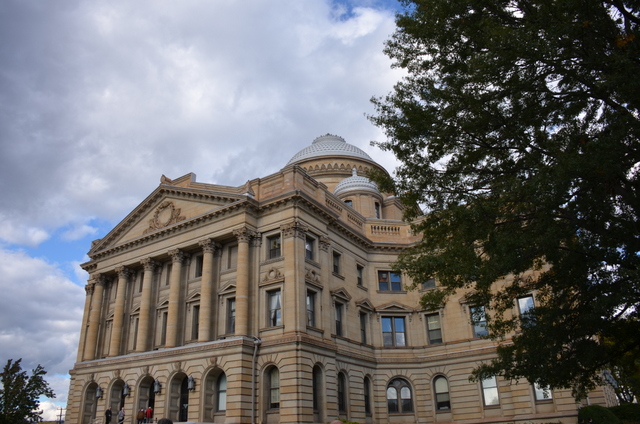October 2015
This is the Luzerne County Courthouse, it is an architectural wonder, not to be missed if you are in Wilkes-Barre.
Wilkes-Barre was once part of Connecticut. At the beginning of its history, the territory belonged to Northampton County, Connecticut. In 1786, after the establishment of Pennsylvania’s claim to the disputed territory, Luzerne County was formed with Wilkes-Barre as its seat.
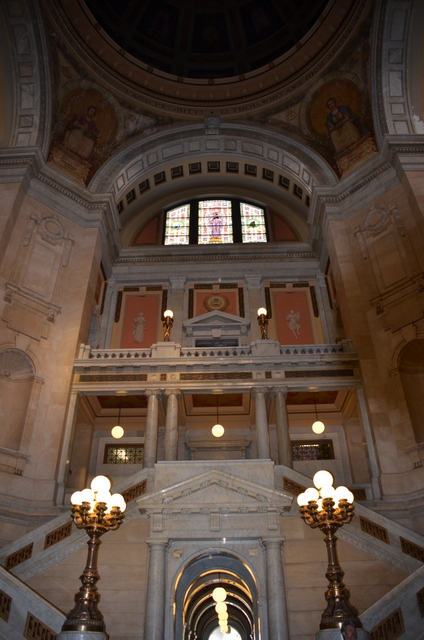 The Classical Revival building with its cruciform shape is 200′ wide x 200′ long. The rotunda is 53 x 53 feet, and it terminates vertically with the dome sitting 100′ above the ground floor.
The Classical Revival building with its cruciform shape is 200′ wide x 200′ long. The rotunda is 53 x 53 feet, and it terminates vertically with the dome sitting 100′ above the ground floor.
The foundation is concrete, the exterior walls are Ohio sandstone and then terra cotta and marble rule throughout the interior.
 The four piers supporting the dome and the walls of the first story are of Botticino stone, a buff-colored marble with a similar color to Caen stone. The cornices, columns, balustrades and corridor wainscoting are white Italian marble.
The four piers supporting the dome and the walls of the first story are of Botticino stone, a buff-colored marble with a similar color to Caen stone. The cornices, columns, balustrades and corridor wainscoting are white Italian marble.
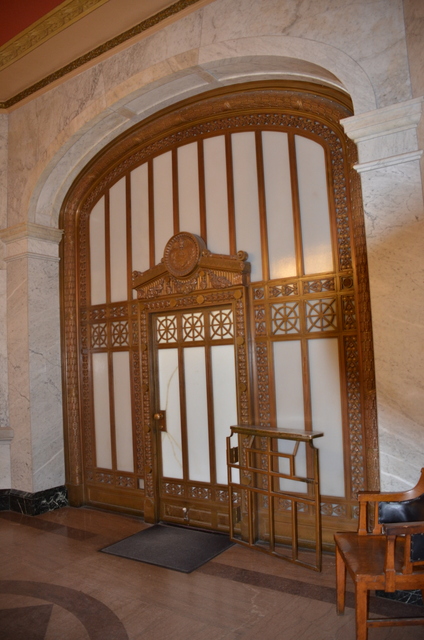 *
*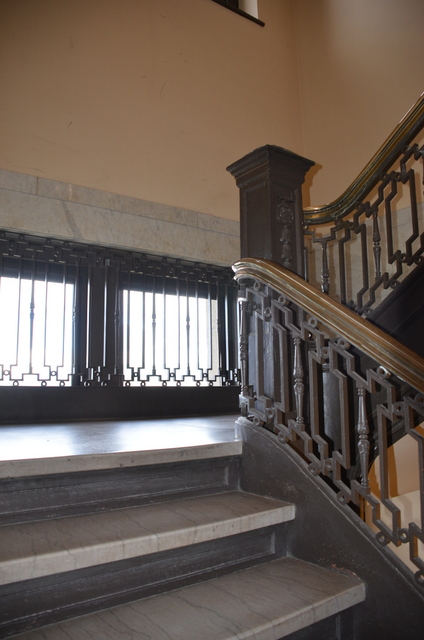 *
*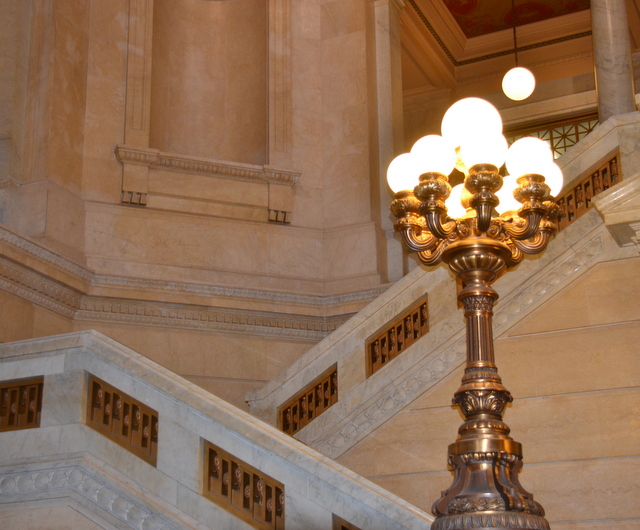 *
*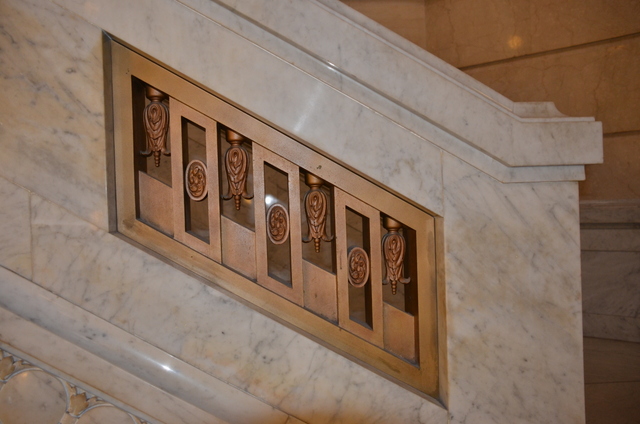 You will also find bronze throughout, including inset in the balustrades, the elevators, and office screens.
You will also find bronze throughout, including inset in the balustrades, the elevators, and office screens.
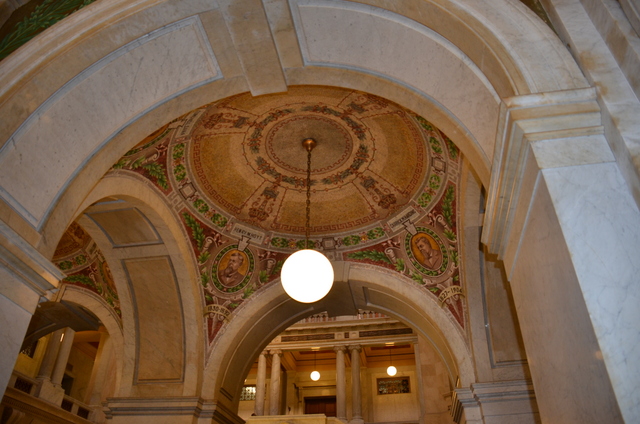 Throughout the building, and especially in the rotunda corridors and entrance corridors are mosaics. They include painted portraits of prominent people throughout the history of Wilkes-Barre and are in chronological order, making the study of the area a simple “walkabout”.
Throughout the building, and especially in the rotunda corridors and entrance corridors are mosaics. They include painted portraits of prominent people throughout the history of Wilkes-Barre and are in chronological order, making the study of the area a simple “walkabout”.
Over each Judge’s Bench in the third-floor courtrooms are the murals: “Justice,” “Prosperity Under the Law,” “The Judicial Virtues,” and “The Awakening of a Commonwealth,” painted by Edwin H. Blashfield, William H. Low, Kenyon Cox, and William T. Smedley, respectively.
The building was added to the National Register of Historic Places in 1980. The cost of the building at the time was $2million. It was the subject of so many lawsuits that it did not come in on time or on budget, but I don’t think anyone today would complain.
